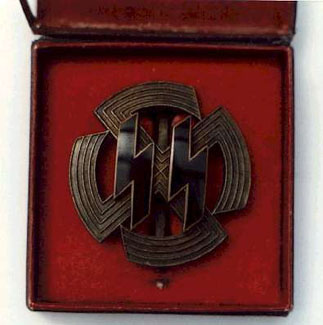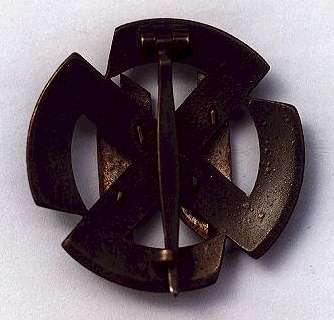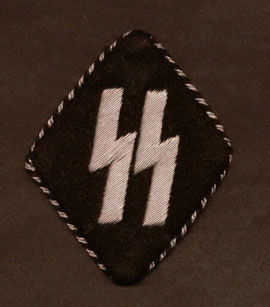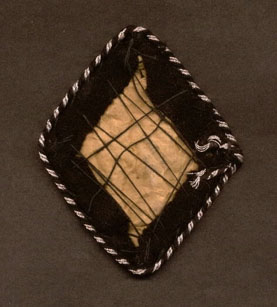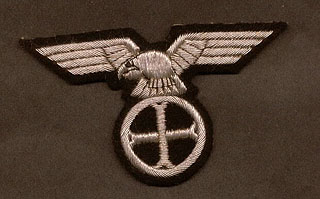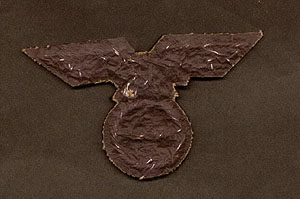|
The Germanic SS was a political non-German SS formation composed exclusively of foreign volunteers of Nordic origins predominately from the Germanic countries: Denmark, Holland, Norway, and the Flemish region of Belgium. All four of these countries formed their own political paramilitary SS organizations that fell under the auspices of the Allgemeine-SS. Members wore uniforms very similar to that of their German counterparts. | |
|
By late 1942,
the war on the Eastern Front was taking a toll on the German Army,
especially on the Waffen-SS non-German personnel. Because of their
heroic deeds at the Front, something needed to be done to encourage
and honor these Germanic SS volunteers.
Germanic Proficiency Badge The award
was authorized by Himmler after consultation with the Chief of
the SS Hauptamt, SS-Obergruppenfuhrer Gotlob Berger. The Germanic
Proficiency Badge shown below, illustrates the Germanische Leistungrune
bronze grade. The design was geared to appeal the Germanic SS.
The badge shows the Sun Wheel in the background with the Siegrunes
(Victory Runes) superimposed in front. 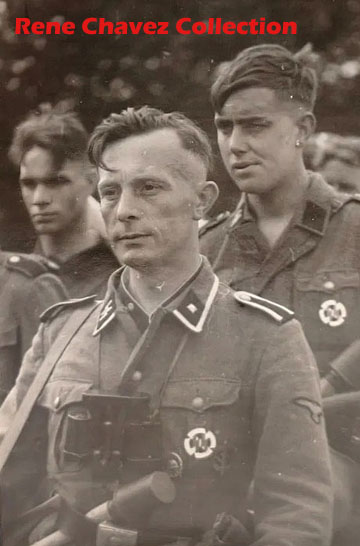
Concerning the badge Mr. Angolia indicates in his book that numerous badges of a lesser quality were produced in Slovakia. This badge is extremely rare. Less than 200 were ever presented and only about 15 or less have been found in collections. There are many Post-production badges in circulation. About four types of reproduction badges have been identified. Measuring 43mm, 44mm, 49mm and 50mm. All have spuriously markings shown on the back "RZM" "RZM M/25" and "RZM M011." I believe that the Germanic badge shown in Formans Guide to Third Reich German Awards shows a post-production badge. | |
|
The Germanic SS NCOs Sleeve Diamond
Germanische SS The Germanic SS sleeve diamond was worn by the political SS organizations of Flanders, Holland and Norway, the Danish Schalburg Corps was the only exception. The sleeve diamond shield is made up black wool base with hand embroidered SS runes in heavy silver- aluminum thread. Base is piped in alternating twisted silver-aluminum and black threads, signifying NCO rank. The Germaansche SS Nederland and the Germanske SS Norge wore the diamond on the upper right sleeve and the Germaansche SS Vlaanderen wore it on the upper left sleeve. | |
|
Norwegian Germanic Officers Eagle
Germanske SS Norge Germanic SS sun cross eagle hand embroidered in aluminum thread on black wool. Reverse shows black paper covering the threads. The eagle is also found machine embroidered in grey thread on a black wool. The eagle was worn on the upper left sleeve of the black GSSN blouse. |
